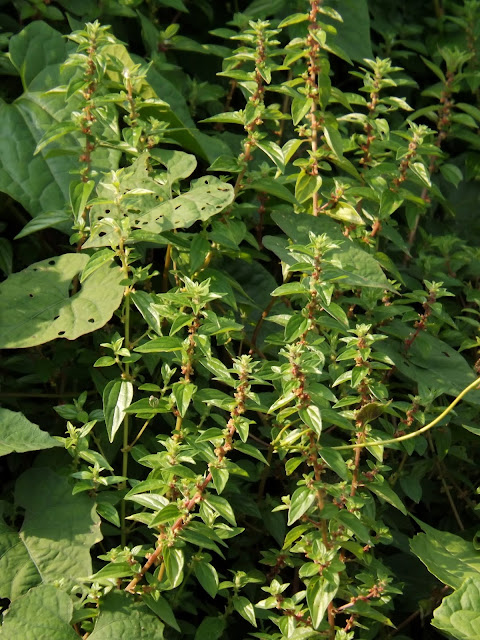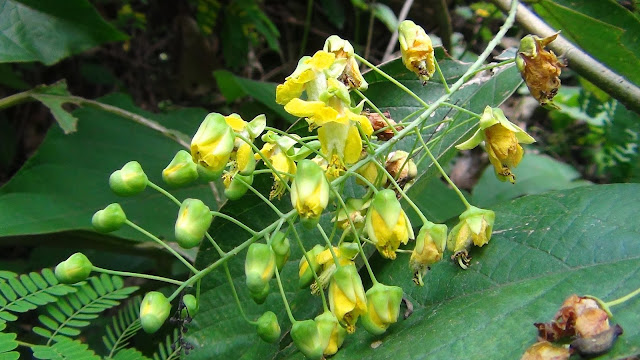Jhunjhuni or Smooth crotalaria, Crotalaria pallida

Jhunjhuni or Smooth crotalaria ( Crotalaria pallida , family: Fabaceae) is an annual or perennial erect herb with trifoliate leaves, attaining a height up to 2 m. Young branches are quadrangular, sometimes reddish, pubescent. When the dried fruits are shaken that make rattling sound. The Bangla name of the plant Jhunjhuni is derived from this special feature. It is found in croplands, grasslands, along roadsides and village thickets in Bangladesh. It is also found throughout the tropics. Other names: Jhonjhoni, Jhumjhumi, Jhunjhuna (Bang); Striped rattlepod, Ding ding (Eng). Leaves are trifoliate, light green; leaflets membranous, elliptic to elliptic-ovate, 3-7 cm long and 2-4 cm wide, upper part glabrous, lower puberulous, apex rounded or retuse. 20-30 flowers are in terminal or axillary inflorescence, erect, up to 30 cm long. Flowers are bright yellow with claw and reddish-brown lines along the veins on the outer sides. Flowering occurs in summer and it continues to late autumn.


